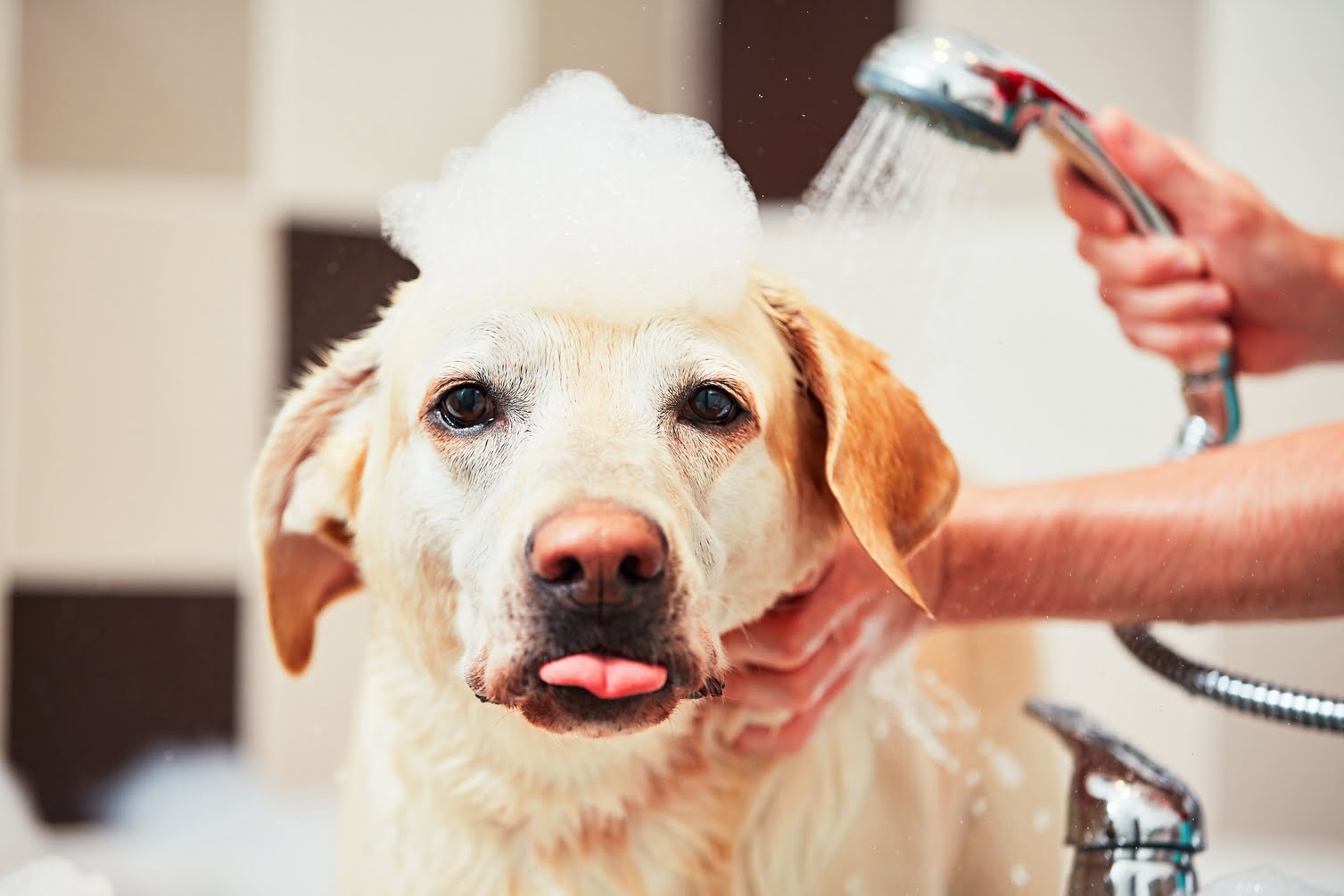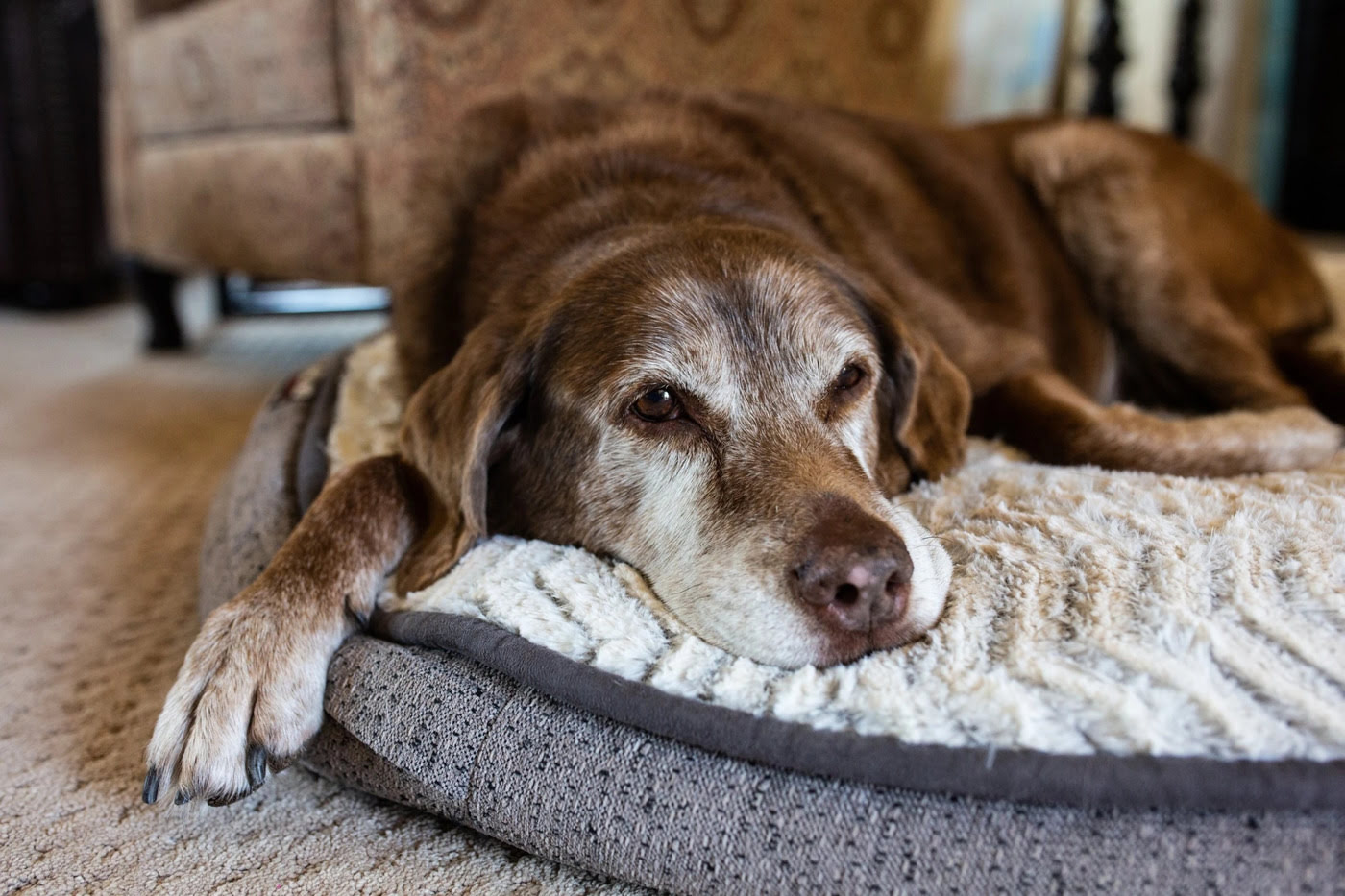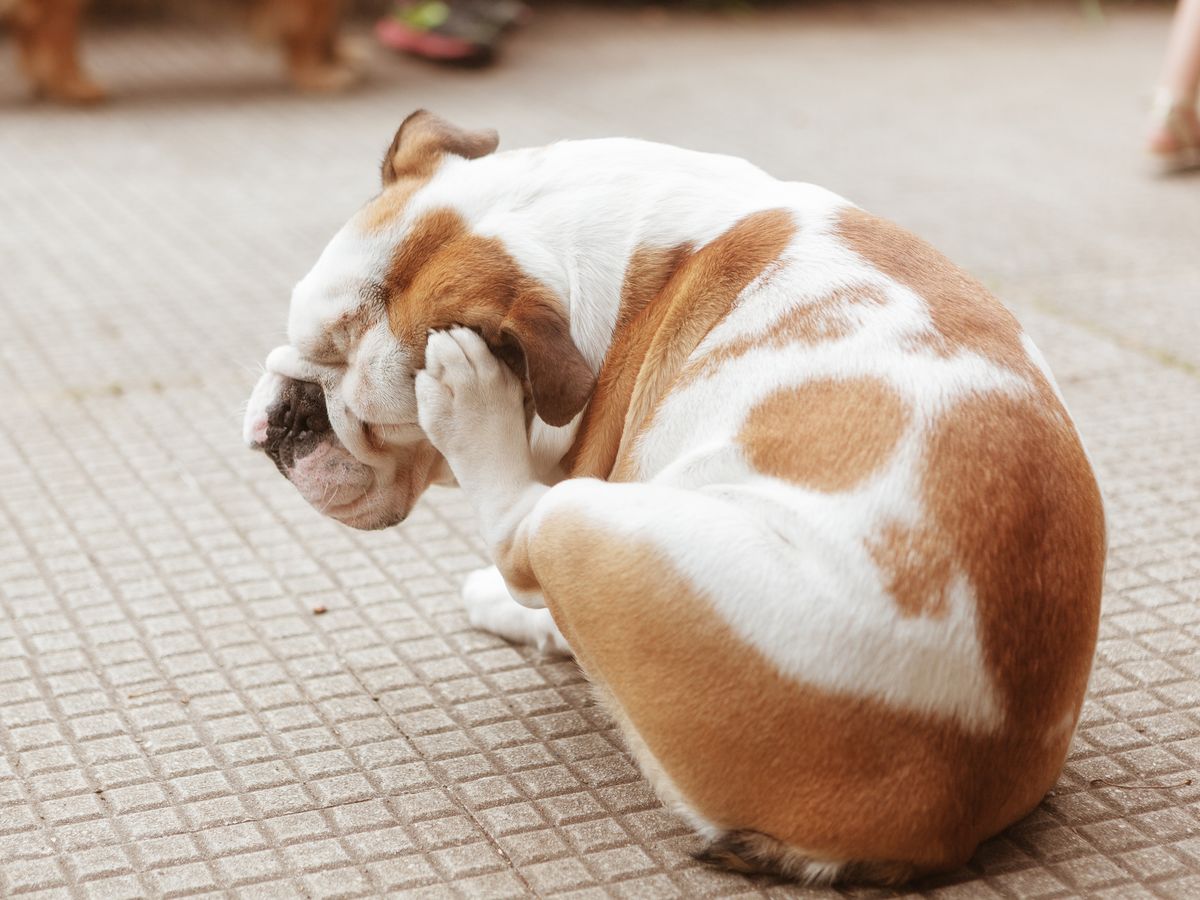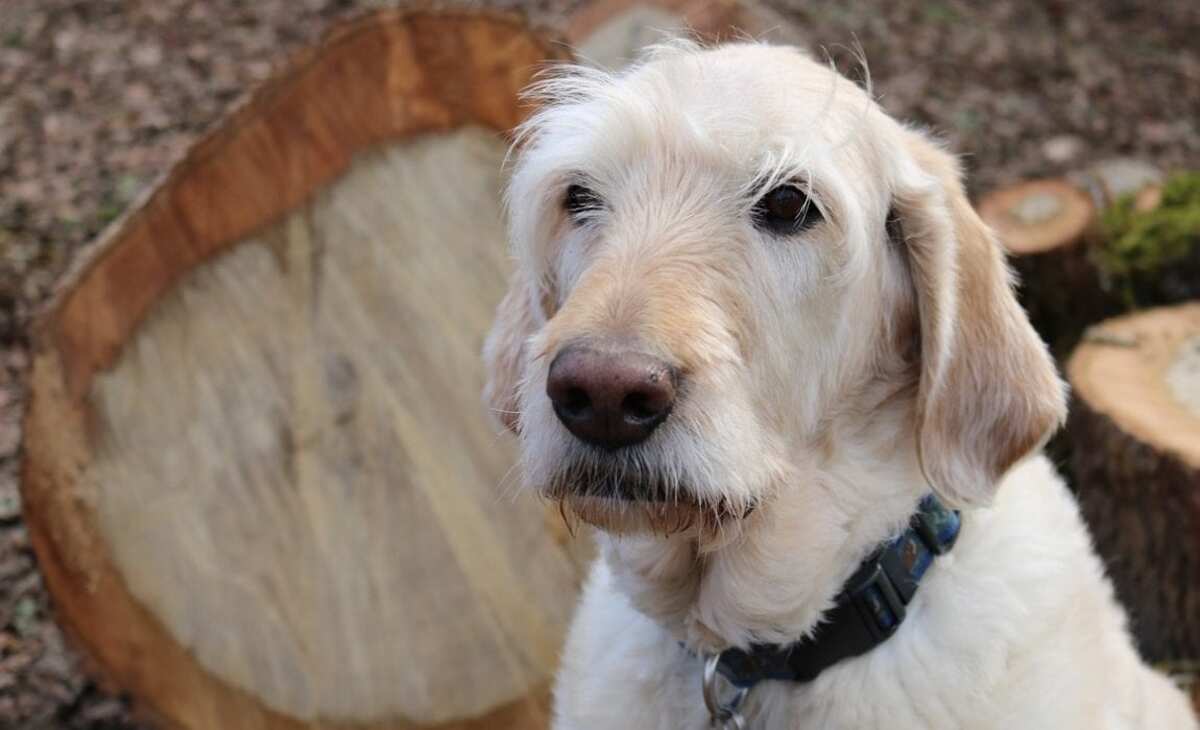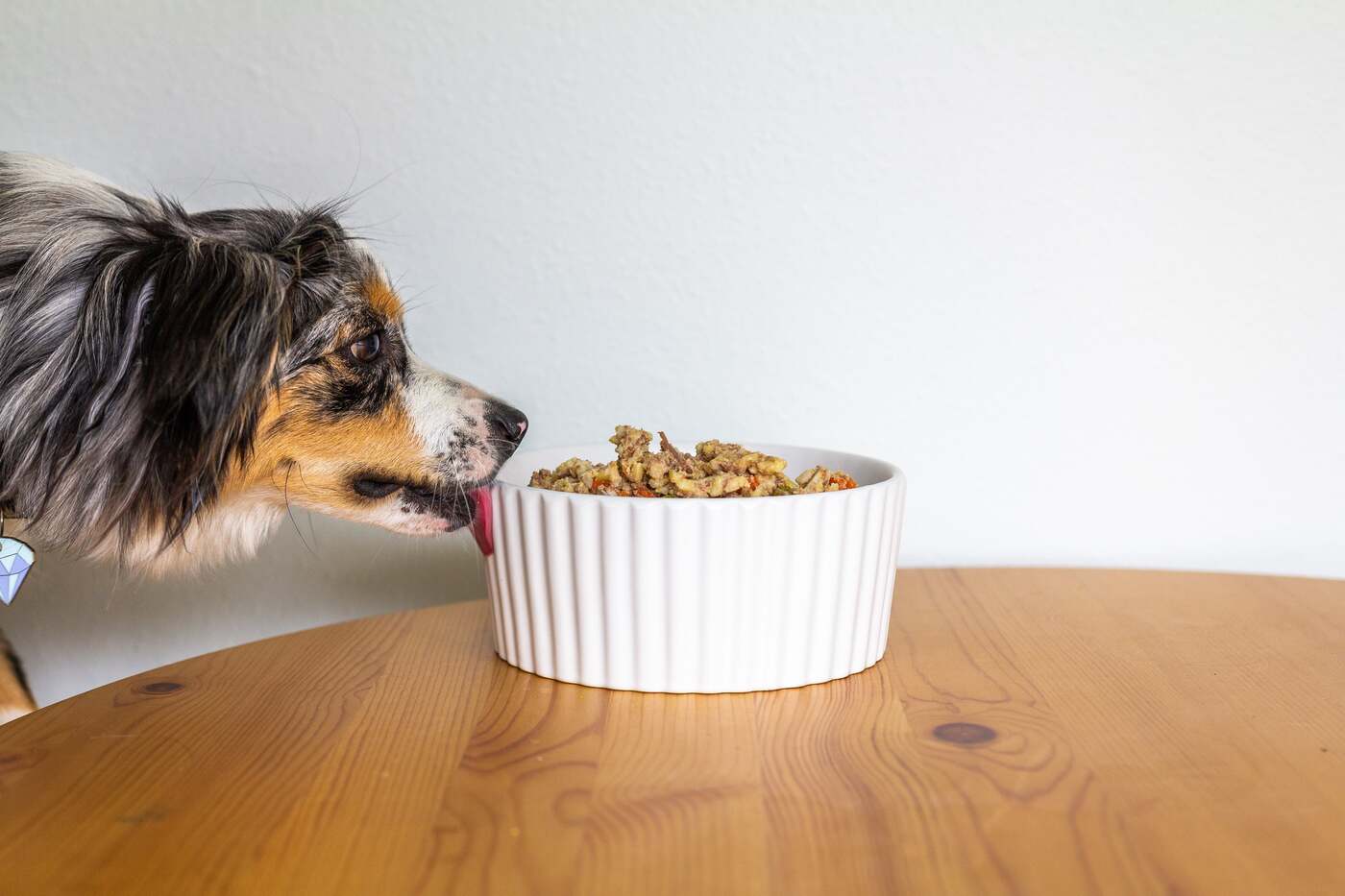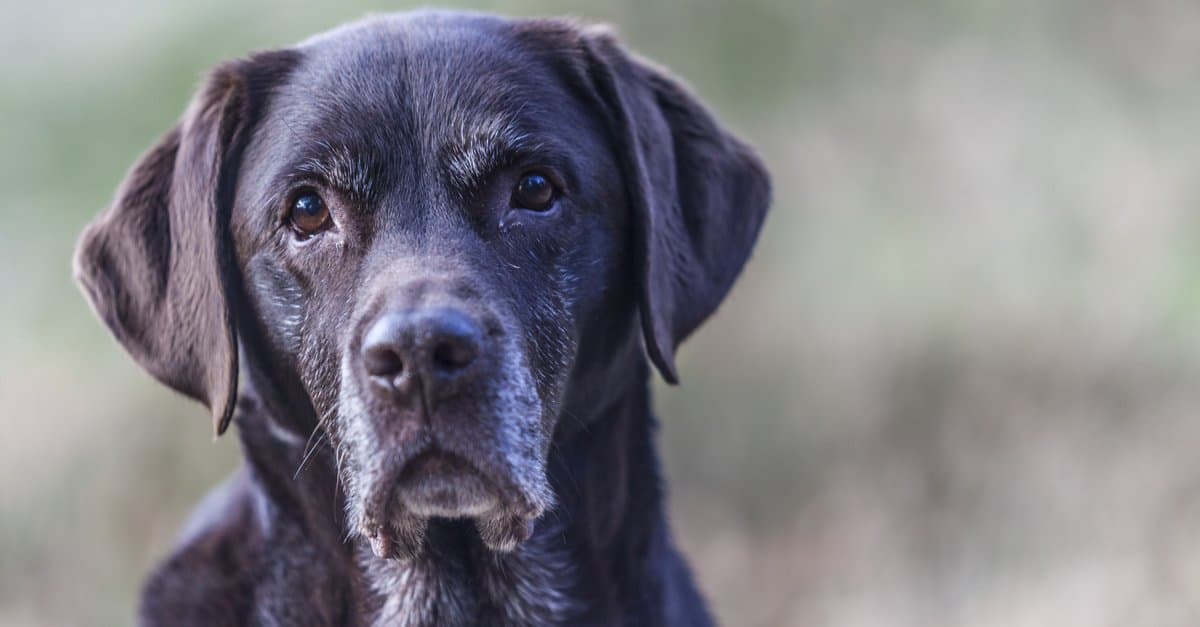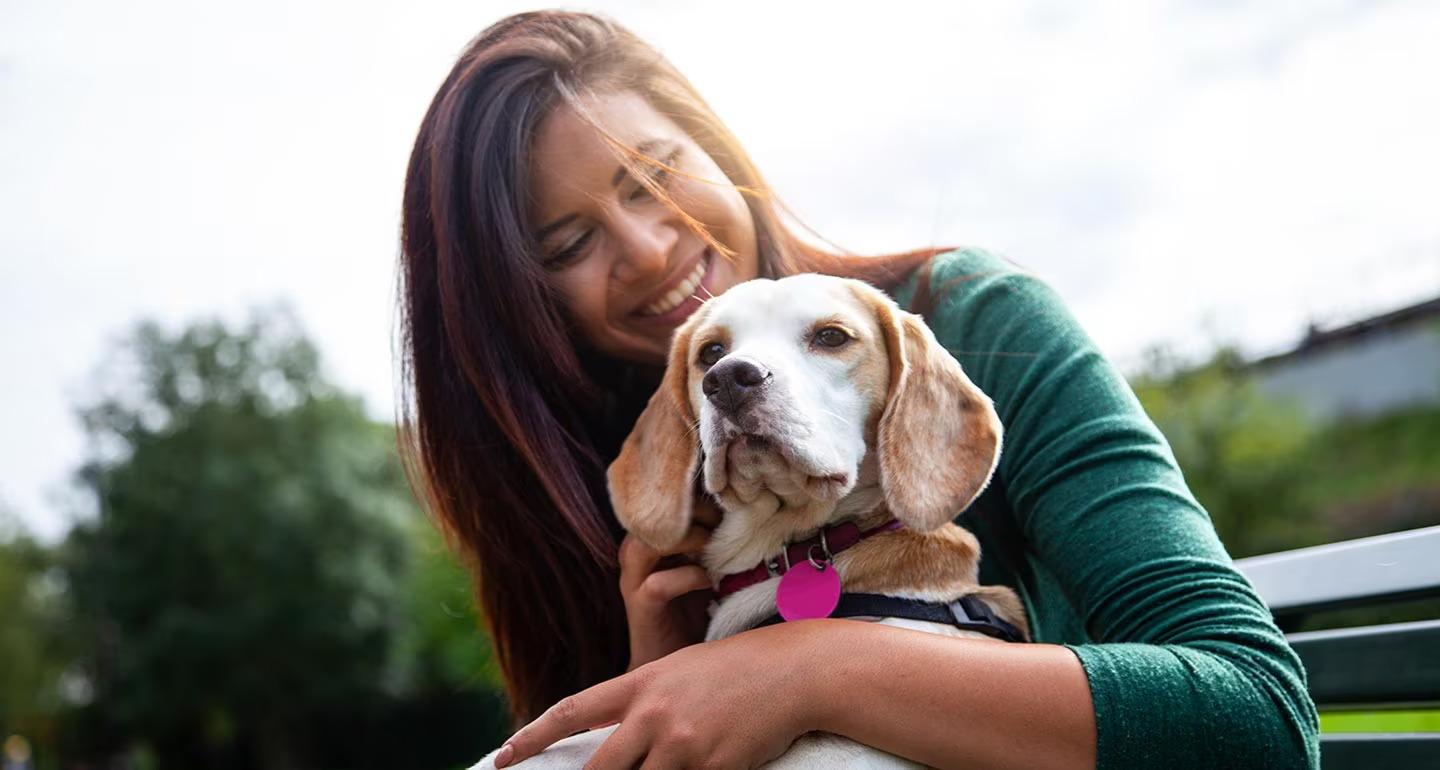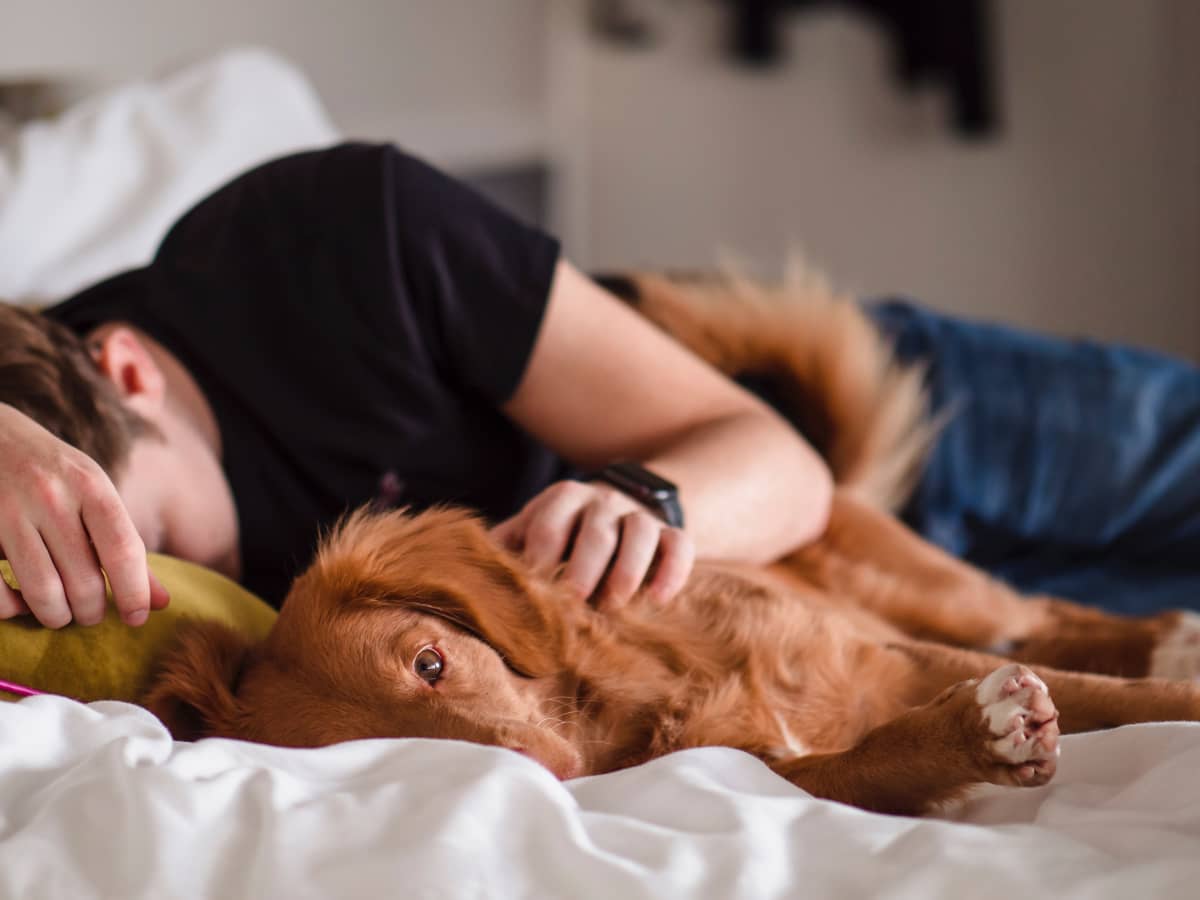Home>Health & Wellness>Behavior & Cognitive Care>How To Exercise Your Senior Dog
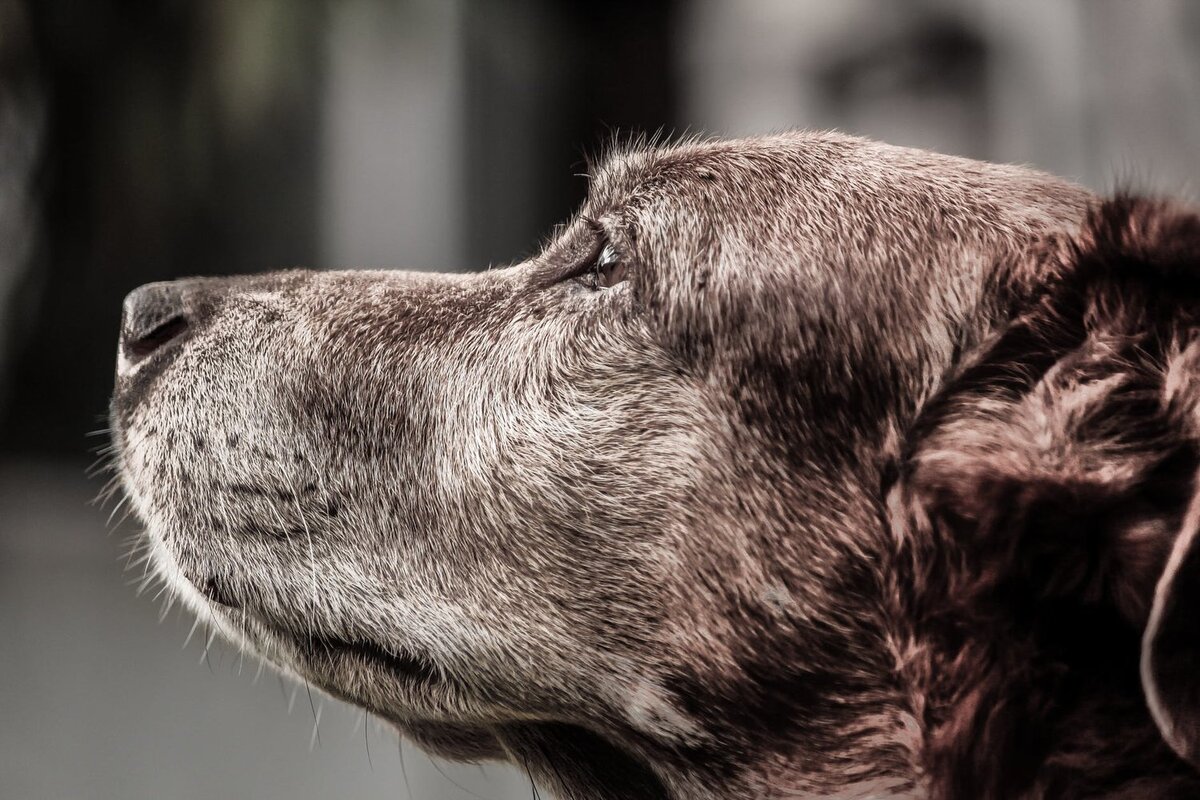

Behavior & Cognitive Care
How To Exercise Your Senior Dog
Published: February 1, 2024
Learn how to exercise and care for your senior dog's behavior and cognitive health with expert tips and advice. Keep your aging pup happy and healthy!
(Many of the links in this article redirect to a specific reviewed product. Your purchase of these products through affiliate links helps to generate commission for Pawsomeoldies.com, at no extra cost. Learn more)
Table of Contents
Introduction
As our beloved furry friends age, their needs and abilities change, requiring adjustments to their care routines. This is especially true when it comes to exercise. Just like humans, senior dogs benefit greatly from regular physical activity, but it's essential to tailor their exercise regimen to accommodate their aging bodies and potential health issues.
In this comprehensive guide, we will explore the best ways to exercise senior dogs, taking into account their unique requirements and limitations. By understanding the specific needs of aging dogs and learning how to choose appropriate exercises, pet parents can help their senior companions stay healthy, happy, and active well into their golden years.
It's important to recognize that senior dogs, like their human counterparts, may experience a decline in mobility, muscle mass, and overall energy levels. As a result, their exercise routines should be carefully designed to promote strength, flexibility, and cardiovascular health while minimizing the risk of injury or overexertion.
By following the advice and recommendations outlined in this article, pet parents can ensure that their senior dogs receive the physical activity they need to thrive, all while fostering a deep sense of companionship and well-being. Let's delve into the world of senior dog exercise and discover how to provide our aging canine friends with the care and attention they deserve.
Read more: Exercises For Dogs With Arthritis
Understanding the needs of senior dogs
Senior dogs undergo a myriad of physical and cognitive changes as they age, necessitating a nuanced understanding of their evolving needs. It's essential for pet parents to recognize these changes and adapt their care routines accordingly, particularly when it comes to exercise.
Physical Limitations
As dogs enter their senior years, they often experience a decline in physical abilities. Reduced muscle mass, joint stiffness, and decreased energy levels are common occurrences. These changes can impact a senior dog's mobility and overall comfort, making it crucial to select exercises that are gentle on their aging bodies.
Cognitive Health
In addition to physical changes, senior dogs may also exhibit cognitive decline, which can affect their response to exercise. Mental stimulation becomes increasingly important, as cognitive challenges may arise, impacting a dog's motivation to engage in physical activities. Tailoring exercise routines to incorporate mental stimulation can help maintain a senior dog's overall well-being.
Health Conditions
Senior dogs are more susceptible to various health conditions, such as arthritis, obesity, and heart disease. These conditions can influence the type and intensity of exercise they can safely engage in. Understanding a senior dog's specific health needs and any existing medical conditions is crucial in designing an exercise regimen that promotes their health without exacerbating underlying issues.
Read more: How To Tell If Your Senior Dog Has Tumors
Emotional Support
As dogs age, they may experience changes in behavior and emotional well-being. Exercise can play a significant role in supporting a senior dog's emotional health, providing opportunities for social interaction, mental stimulation, and the release of endorphins. Recognizing the emotional benefits of exercise is essential for promoting a senior dog's overall happiness and contentment.
Individualized Approach
Every senior dog is unique, and their exercise needs will vary based on factors such as breed, size, and overall health. It's important for pet parents to take an individualized approach, closely observing their dog's physical and emotional responses to different types of exercise. By understanding the specific needs of their senior dog, pet parents can tailor an exercise routine that supports their companion's overall well-being.
In summary, understanding the needs of senior dogs involves recognizing the physical, cognitive, and emotional changes that accompany aging. By acknowledging these changes and taking an individualized approach to exercise, pet parents can provide their senior dogs with the care and support they need to thrive in their golden years.
Choosing the right exercises for your senior dog
When it comes to exercising senior dogs, a tailored approach is essential to ensure their well-being and enjoyment. The right exercises can help maintain their physical health, cognitive function, and emotional balance. Here are some key considerations for choosing the most suitable exercises for senior dogs:
Low-Impact Activities
Senior dogs often experience joint stiffness and reduced mobility. Opting for low-impact exercises such as leisurely walks, gentle swimming, or modified agility courses can help maintain their cardiovascular health without placing excessive strain on their aging joints. These activities provide the necessary physical stimulation while minimizing the risk of discomfort or injury.
Mental Stimulation
Incorporating mental stimulation into exercise routines is crucial for senior dogs. Engaging activities such as puzzle games, scent work, or obedience training can help keep their minds sharp and alleviate cognitive decline. Mental stimulation not only enhances their overall well-being but also encourages a sense of accomplishment and fulfillment.
Flexibility and Balance Exercises
As dogs age, maintaining flexibility and balance becomes increasingly important. Incorporating exercises that focus on stretching, balance, and coordination, such as gentle yoga poses or balance exercises on padded surfaces, can help improve their physical resilience and reduce the risk of falls or injuries.
Supervised Playtime
Encouraging supervised playtime with appropriate toys and interactive games can provide senior dogs with both physical and mental stimulation. Tug-of-war with soft toys, gentle fetch games, or hide-and-seek activities can keep them engaged while allowing for controlled movement and playfulness.
Adapted Intensity and Duration
Adjusting the intensity and duration of exercise is crucial for senior dogs. Shorter, more frequent sessions are often more suitable than prolonged activities. Additionally, monitoring their energy levels and adjusting the pace of exercise based on their comfort and enthusiasm is essential to prevent overexertion.
Individualized Approach
Every senior dog has unique abilities and limitations. It's important to observe their responses to different exercises and tailor the routine to suit their specific needs. Some dogs may thrive with gentle hikes, while others may prefer water-based activities. Understanding their preferences and physical capabilities is key to selecting the most appropriate exercises.
By choosing the right exercises for senior dogs, pet parents can promote their companions' physical health, mental acuity, and emotional well-being. These tailored exercises not only support the aging process but also strengthen the bond between pet parents and their senior canine friends.
Tips for exercising your senior dog
When it comes to exercising your senior dog, there are several tips and strategies that can help ensure their well-being and enjoyment. By incorporating these tips into your senior dog's exercise routine, you can promote their physical health, cognitive function, and emotional balance.
-
Consult with a Veterinarian: Before implementing a new exercise regimen for your senior dog, it's crucial to consult with a veterinarian. A professional evaluation can help identify any underlying health issues or physical limitations that may impact the type and intensity of exercise your dog can safely engage in.
-
Warm-Up and Cool-Down: Just like humans, senior dogs benefit from a proper warm-up and cool-down routine. Gentle stretching and short walks before and after exercise can help prepare their muscles and joints, reducing the risk of strain or injury.
-
Choose Comfortable Surfaces: When engaging in physical activities with your senior dog, opt for comfortable and supportive surfaces. Soft grass, padded mats, or non-slip flooring can help minimize joint impact and provide better traction, especially during balance and coordination exercises.
-
Monitor Environmental Conditions: Be mindful of the environmental conditions when exercising your senior dog. Extreme temperatures, slippery surfaces, or uneven terrain can pose challenges for aging dogs. Choose suitable times and locations for exercise to ensure their safety and comfort.
-
Hydration and Rest: Ensure that your senior dog has access to fresh water before, during, and after exercise. Additionally, monitor their energy levels and provide ample opportunities for rest. Adjust the duration and intensity of exercise based on their comfort and well-being.
-
Incorporate Variety: Keep your senior dog's exercise routine engaging by incorporating a variety of activities. This can include leisurely walks, gentle games, mental stimulation exercises, and supervised playtime. Variety not only prevents monotony but also provides holistic physical and mental stimulation.
-
Observe Body Language: Pay close attention to your senior dog's body language during exercise. Signs of discomfort, fatigue, or reluctance should be taken seriously. Adjust the exercise accordingly and be responsive to their cues to ensure a positive and enjoyable experience.
-
Maintain Consistency: Establish a consistent exercise routine for your senior dog. Regular, low-impact activities can help maintain their physical health and mental acuity. Consistency also fosters a sense of predictability and routine, which can be comforting for aging dogs.
By implementing these tips, pet parents can create a safe, enjoyable, and beneficial exercise routine for their senior dogs. With careful attention to their individual needs and limitations, senior dogs can continue to experience the joy and vitality that comes with staying active in their later years.
Precautions and considerations for senior dog exercise
When designing an exercise regimen for senior dogs, it's crucial to prioritize their safety, comfort, and overall well-being. By taking specific precautions and considerations into account, pet parents can ensure that their aging canine companions engage in physical activities that are both beneficial and gentle on their aging bodies.
Professional Evaluation
Before embarking on a new exercise routine, it's essential to seek guidance from a veterinarian. A professional evaluation can provide valuable insights into any underlying health conditions, musculoskeletal issues, or age-related concerns that may impact the type and intensity of exercise suitable for a senior dog. This proactive approach allows pet parents to tailor the exercise regimen to their dog's specific needs, minimizing the risk of exacerbating existing health issues.
Low-Impact Activities
Senior dogs benefit from low-impact exercises that promote cardiovascular health without placing undue stress on their joints and muscles. Activities such as leisurely walks, gentle swimming, or modified agility courses are ideal options. These exercises help maintain mobility and circulation while minimizing the risk of strain or injury, aligning with the physical limitations commonly experienced by aging dogs.
Adapted Intensity and Duration
Monitoring the intensity and duration of exercise is paramount when it comes to senior dog care. Shorter, more frequent sessions are often more suitable than prolonged activities. Observing the dog's energy levels and adjusting the pace of exercise based on their comfort and enthusiasm is essential to prevent overexertion. This approach ensures that senior dogs receive the necessary physical stimulation without experiencing undue fatigue or discomfort.
Environmental Considerations
Creating a safe and comfortable exercise environment is crucial for senior dogs. Pet parents should be mindful of factors such as temperature, humidity, and terrain when engaging in outdoor activities. Extreme weather conditions, slippery surfaces, or uneven terrain can pose challenges for aging dogs. Choosing suitable times and locations for exercise helps ensure their safety and comfort, minimizing the risk of accidents or discomfort.
Supervision and Support
During exercise, senior dogs benefit from attentive supervision and support. Pet parents should closely observe their dog's body language, responsiveness, and overall well-being throughout the activity. Being responsive to any signs of discomfort, fatigue, or reluctance allows for immediate adjustments to the exercise routine, ensuring a positive and enjoyable experience for the senior dog.
Individualized Approach
Recognizing that every senior dog is unique, an individualized approach to exercise is essential. Understanding the dog's breed, size, physical condition, and any existing health issues enables pet parents to tailor the exercise regimen to suit their specific needs. By acknowledging the individuality of each senior dog, pet parents can create a personalized exercise plan that promotes their companion's overall well-being.
In summary, exercising senior dogs requires careful consideration of their physical limitations, health status, and individual needs. By implementing these precautions and considerations, pet parents can provide their aging canine companions with a safe, enjoyable, and beneficial exercise experience, supporting their overall health and vitality in their senior years.
Conclusion
In conclusion, the well-being of senior dogs hinges on a thoughtful and tailored approach to exercise. By understanding the unique needs and limitations of aging canine companions, pet parents can create an exercise regimen that promotes physical health, cognitive function, and emotional balance. The key to exercising senior dogs lies in embracing low-impact activities, incorporating mental stimulation, and prioritizing safety and individualized care.
As senior dogs navigate the challenges of aging, their exercise routines play a pivotal role in maintaining their overall well-being. The emphasis on low-impact activities, such as leisurely walks, gentle swimming, and adapted agility courses, allows for physical stimulation while minimizing the risk of strain or injury. These exercises cater to the changes in mobility and joint health commonly experienced by aging dogs, promoting cardiovascular health without placing undue stress on their bodies.
Furthermore, the integration of mental stimulation through activities like puzzle games, scent work, and supervised playtime fosters cognitive engagement and emotional fulfillment in senior dogs. This holistic approach to exercise acknowledges the cognitive changes that accompany aging and provides avenues for mental acuity and enrichment.
Precautions and considerations, including professional evaluation, adapted intensity and duration, environmental mindfulness, and individualized support, form the cornerstone of a safe and effective exercise regimen for senior dogs. By proactively addressing their specific needs and potential health concerns, pet parents can ensure that their aging companions engage in physical activities that are both beneficial and gentle on their aging bodies.
In essence, the art of exercising senior dogs transcends mere physical activity; it embodies a deep understanding of their evolving needs and a commitment to nurturing their well-being. Through a balanced and tailored exercise regimen, senior dogs can continue to experience the joy, vitality, and companionship that enrich their golden years, fostering a deep sense of connection and fulfillment for both pet parents and their beloved canine companions.
